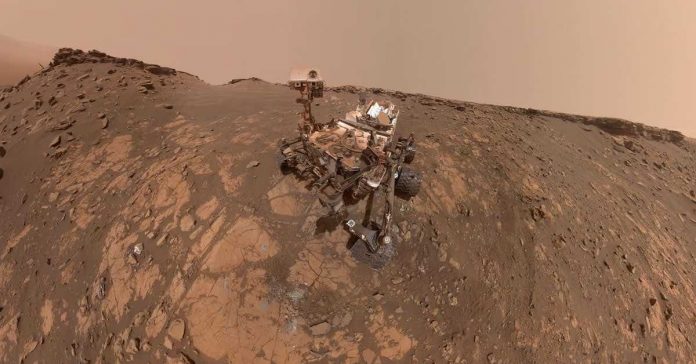NASA is sending its Curiosity rover on a journey to a new area of Mount Sharp, the massive peak that sits in the center of the Gale Crater.
NASA’s Curiosity Mars rover has started a road trip that will continue through the summer across roughly a mile (1.6 km) of terrain. By trip’s end, the rover will be able to ascend to the next section of the 3-mile-tall (5-km-tall) Martian mountain – called Mount Sharp – that it’s been exploring since 2014, searching for conditions that may have supported ancient microbial life.
Located on the floor of Gale Crater, Mount Sharp is composed of sedimentary layers that built up over time. Each layer helps tell the story about how Mars changed from being more Earth-like – with lakes, streams and a thicker atmosphere – to the nearly-airless, freezing desert it is today.
The rover’s next stop is a part of the mountain called the “sulfate-bearing unit.” Sulfates, like gypsum and Epsom salts, usually form around water as it evaporates, and they are yet another clue to how the climate and prospects for life changed nearly 3 billion years ago.
But between the rover and those sulfates lies a vast patch of sand that Curiosity must drive around to avoid getting stuck. Hence the mile-long road trip: Rover planners – who are commanding Curiosity from home rather than from their offices at NASA’s Jet Propulsion Laboratory (JPL) in Southern California – expect to reach the area in early fall, although the science team could decide to stop along the way to drill a sample or study any surprises they come across.
Depending on the landscape, Curiosity’s top speeds range between 82-328 feet (25-100 meters) per hour. Some of this summer road trip will be completed using the rover’s automated driving abilities, which enable Curiosity to find the safest paths forward on its own. Rover planners allow for this when they lack terrain imagery. (Planners hope for more autonomy in the future; in fact, you can help train an algorithm that identifies Martian drive paths.)
Matt Gildner is lead rover driver at JPL. He said:
Curiosity can’t drive entirely without humans in the loop. But it does have the ability to make simple decisions along the way to avoid large rocks or risky terrain. It stops if it doesn’t have enough information to complete a drive on its own.
In journeying to the “sulfate-bearing unit,” Curiosity leaves behind Mount Sharp’s “clay-bearing unit,” which the robotic scientist had been investigating on the lower side of the mountain since early 2019. Scientists are interested in the watery environment that formed this clay and whether it could have supported ancient microbes.
Extending across both the clay unit and the sulfate unit is a separate feature: the “Greenheugh Pediment,” a slope with a sandstone cap. It likely represents a major transition in the climate of Gale Crater. At some point, the lakes that filled the 96-mile-wide (154-kilometer-wide) crater disappeared, leaving behind sediments that eroded into the mountain we see today. The pediment formed later (though whether from wind or water erosion remains unknown); then windblown sand blanketed its surface, building into the sandstone cap.
The northern end of the pediment spans the clay region, and though the slope is steep, the rover’s team decided to ascend Greenheugh back in March for a preview of terrain they’ll see later in the mission. As Curiosity peeked over the top, scientists were surprised to find small bumps along the sandstone surface.





























